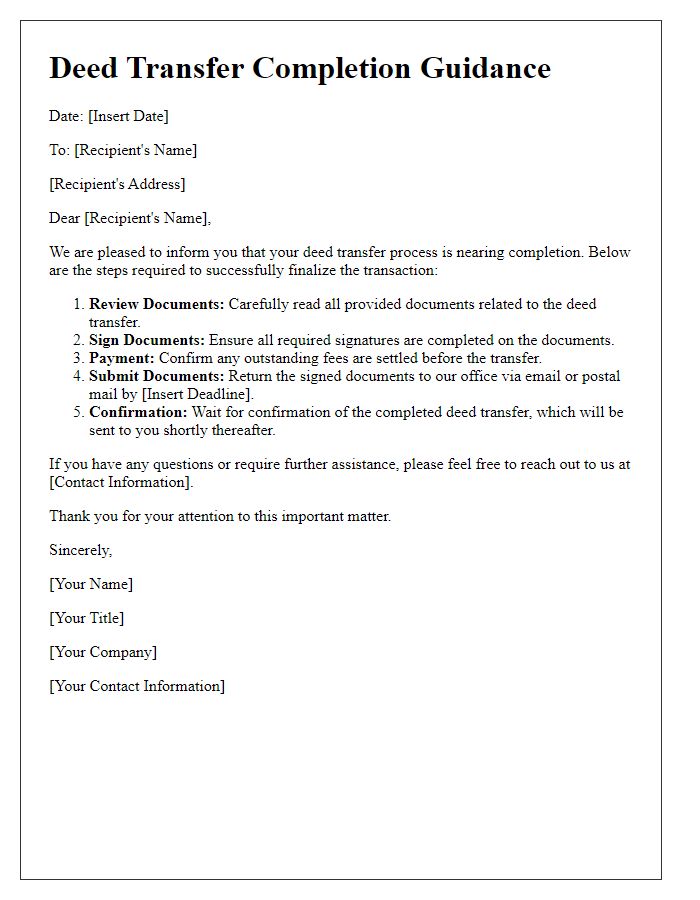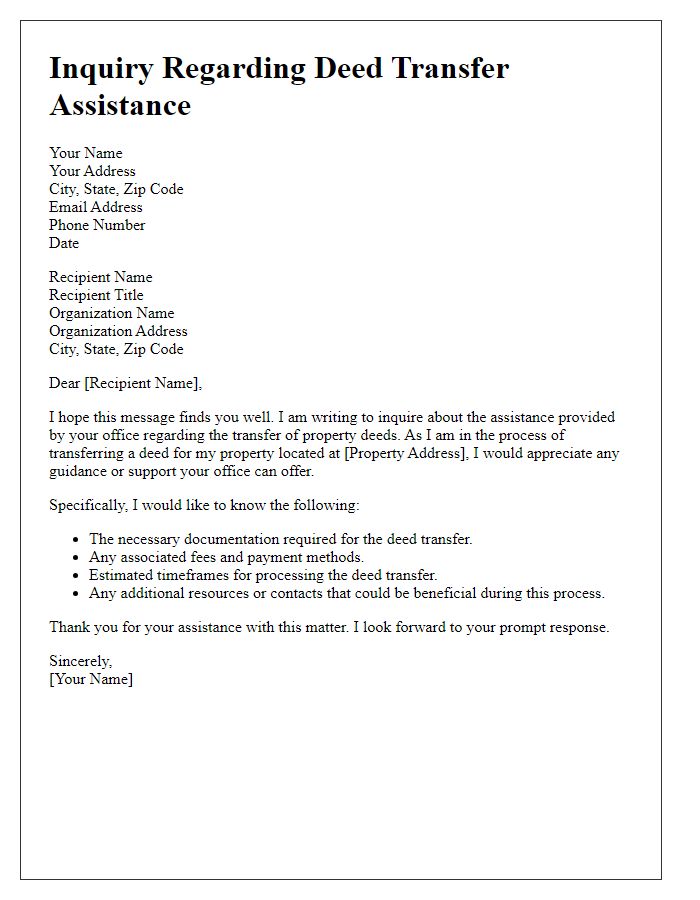Are you feeling overwhelmed by the process of transferring a deed? You're not alone; many people find this task daunting due to its legal complexities. Luckily, there are resources available to help guide you through every step of the deed transfer journey. Join us as we explore essential tips and expert advice to make your transfer seamless and stress-freeâread on to discover more!

Clear identification of involved parties
The deed transfer assistance involves a clear identification of involved parties crucial for legal documentation. The Grantor (the current property owner) must be distinctly identified, including full legal name, address, and contact information, ensuring accurate transfer of ownership. The Grantee (the new property owner) also needs precise identification; full legal name, address, and other identifying details must be meticulously recorded. Additionally, the property description, including exact location (such as GPS coordinates), parcel number, and any relevant zoning classifications, should be exhaustively detailed. Collaborating legal representatives or agents may also be noted, providing their names and contact information. This comprehensive identification ensures clarity and legality throughout the deed transfer process.
Accurate property description details
Accurate property descriptions are crucial for successful deed transfers, encompassing multiple important elements. Property details include the street address, which identifies the specific location, alongside legal descriptions that provide boundaries and measurements. Key elements such as lot number (often listed in municipal records) and subdivision name enhance clarity, ensuring precise identification within a larger development. Additionally, zoning classifications determine how the property can be utilized, impacting its value and potential development opportunities. Title information should include existing encumbrances (like mortgages or easements) that may affect ownership rights. Properly documenting these aspects prevents legal disputes and facilitates smoother transactions between parties involved.
Comprehensive legal terminology
Deed transfer processes require meticulous attention to detail and understanding of legal terminology, specifically the jargon used in property law. A deed, which serves as a legal document affirming the transfer of property ownership, must include elements such as the grantor (current owner), grantee (new owner), legal description (specific details defining the property boundaries), and recording information (local office where the deed is filed). Important terms include "consideration" (the monetary value exchanged), "title" (legal ownership rights), and "easements" (rights to use another's land for specific purposes). Comprehensively understanding these terms is crucial for accurate and efficient deed transferring, ensuring compliance with state regulations and preventing potential disputes in the future. Legal professionals often reference statutes unique to the jurisdiction, such as the Uniform Property Registration Act or local property code, to ensure the process adheres to particular legal frameworks.
Signature lines for all relevant parties
Deed transfer assistance requires careful documentation to ensure all relevant parties are properly acknowledged and authorized. The deed itself needs to include signature lines for key participants, including the Grantor (the individual transferring the property), who must sign to verify their consent. The Grantee (the individual receiving the property) also requires a designated signature line to accept the transfer officially. In transactions involving multiple owners or stakeholders, additional signature lines should be included for co-owners or spouses to avoid any future disputes. Notarization may be required; thus, a signature line for a notary public should be present to validate the deed transfer. Clearly defined spaces for the printed names, dates, and addresses of all parties enhance clarity and legal compliance in the property transfer process.
Contact information for further communication
Effective deed transfer requires clear communication between involved parties. Essential contact information includes full names, phone numbers, and email addresses for all stakeholders, such as buyers, sellers, and legal representatives. Providing a mailing address for sending documents securely is also crucial. In addition, including the contact information of a notary public, if involved, ensures that all legal aspects are handled efficiently. Timely communication (preferably within 24 hours for urgent matters) can significantly streamline the process, minimizing delays or misunderstandings that can arise during property transactions.













Comments